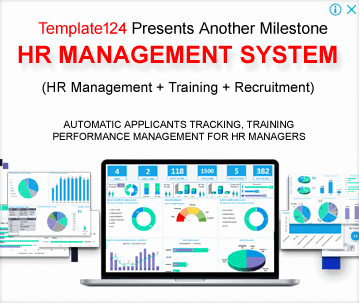An Employee Management System (EMS) is a software solution designed to streamline and automate various human resource (HR) processes. It serves as a central repository for employee data, providing HR managers and employees with tools to manage tasks such as payroll, attendance, performance evaluation, and more.
Components of an EMS:
Employee Database
- Centralized storage of employee information such as personal details, job roles, and contact information.
- Secure and accessible data management.
Attendance and Time Tracking
- Automated clock-in/clock-out functionality.
- Leave management and scheduling.
- Overtime and shift tracking.
Payroll Management
- Salary calculation and processing.
- Tax deductions and benefits administration.
- Payslip generation and distribution.
Performance Management
- Goal setting and tracking.
- Performance appraisals and reviews.
- Feedback and development plans.
Recruitment and Onboarding
- Job posting and applicant tracking.
- Interview scheduling and candidate evaluation.
- Onboarding process automation.
Employee Self-Service Portal
- Access to personal records and pay slips.
- Leave application and approval workflow.
- Communication platform for announcements and policies.
Training and Development
- Training program scheduling and tracking.
- Skill assessments and certifications.
- E-learning modules and resources.
Compliance and Reporting
- Regulatory compliance tracking (e.g., labor laws, safety regulations).
- Customizable reports and analytics.
- Audit trails and data integrity checks.
Related Article: Top 3 HR Plan Templates Excel Download – PMITOOLS

Benefits of Implementing an Employee Management System
Here are some key benefits:
Efficiency and Productivity
- Automates routine tasks, reducing manual workload.
- Streamlines HR processes, leading to faster decision-making.
Data Accuracy and Security
- Reduces human errors in data entry and calculations.
- Implements robust security measures to protect sensitive information.
Enhanced Employee Experience
- Provides employees with easy access to their information.
- Facilitates transparent communication and feedback mechanisms.
Cost Savings
- Minimizes the need for paper-based processes and physical storage.
- Reduces administrative overhead and operational costs.
Compliance and Risk Management
- Ensures adherence to legal and regulatory requirements.
- Provides tools for tracking and reporting compliance-related activities.
Scalability and Flexibility
- Adapts to the changing needs of the organization.
- Scalable to accommodate organizational growth and expansion.
Related Article: 10 Tips To Build An Employee Task Tracker Template – PMITOOLS
Implementation of an EMS
Implementing an Employee Management System (EMS) involves a structured approach to streamline HR processes and enhance organizational efficiency. The implementation begins with a thorough needs assessment to identify specific requirements, followed by selecting a suitable EMS vendor. Customization and integration with existing systems are crucial steps, ensuring the EMS aligns with organizational workflows. Data migration must be handled meticulously to maintain accuracy. Comprehensive training and change management are essential to facilitate user adoption.
Finally, continuous monitoring and support ensure the EMS operates smoothly and evolves with the organization’s needs, ultimately improving employee management and productivity.
Related Article: Top 3 Employee Performance Report Templates – PMITOOLS
Who is responsible for EMS?
1. Human Resources (HR) Department
HR Managers and Specialists: Oversee the overall implementation and management of the EMS. Ensure that the system meets the organization’s HR needs and complies with labor laws and regulations. Manage employee data, performance reviews, and training modules within the EMS.
2. IT Department
IT Managers and Technicians: Handle the technical aspects of the EMS, including installation, configuration, and integration with other systems. Ensure data security and system integrity. Provide technical support and troubleshoot any issues that arise.
3. Finance Department
Payroll and Financial Analysts: Integrate payroll management features with the organization’s financial systems. Ensure accurate and timely salary processing, tax calculations, and benefits administration. Use the EMS for financial reporting and compliance.
4. Senior Management and Executives
Chief Human Resources Officer (CHRO): Provide strategic direction and ensure that the EMS aligns with organizational goals. Oversee the budget and resources allocated for the EMS. Monitor the effectiveness and impact of the EMS on employee productivity and satisfaction.
5. Project Managers
Oversee the EMS implementation project from planning to deployment. Coordinate between different departments to ensure smooth execution. Manage timelines, resources, and stakeholder expectations.
6. External Vendors and Consultants
Software Providers: Develop and provide the EMS software. Offer customization options, technical support, and updates.
Consultants: Assist with the needs assessment, planning, and implementation phases. Provide expertise and best practices for optimizing the EMS.
7. Employees
Actively use the EMS for self-service functionalities, such as accessing payslips, applying for leave, and participating in performance evaluations. Provide feedback to HR and IT departments to improve system usability and functionality.
8. Collaborative Responsibilities
Data Privacy and Compliance: All departments involved must ensure the EMS complies with data protection laws (e.g., GDPR, CCPA) and internal privacy policies.
Training and Change Management: Joint effort by HR, IT, and project managers to train staff and manage the transition to the new EMS.
Continuous Improvement: Regular reviews and updates by HR, IT, and senior management to ensure the EMS evolves with changing organizational needs and technological advancements.
The responsibility for an EMS is multifaceted, involving a collaborative effort between HR, IT, finance, senior management, project managers, external vendors, and employees. Each role plays a crucial part in ensuring the system’s successful implementation, operation, and continuous improvement, contributing to enhanced organizational efficiency and employee satisfaction.
What is an Employee Management System Template:
For HR Templates Visit: HR Management Template (Strategy, Performance) Excel (ucube.biz)

How to Create an Employee Management System Template
Creating an EMS template involves several steps, each ensuring that the template is comprehensive, user-friendly, and adaptable to specific organizational needs.
Identify Requirements
Conduct a thorough needs assessment involving key stakeholders (HR, IT, Finance, Management). Define the scope and objectives of the EMS.
Design the Template Structure
Create a modular structure covering all essential components (employee database, attendance, payroll, etc.). Ensure each module has clearly defined fields and workflows.
Develop Standard Forms and Fields
Design forms for data entry (employee information, leave requests, performance reviews). Define standard fields for each form, ensuring they capture all necessary information.
Create Workflows and Processes
Define approval workflows for tasks like leave requests and performance appraisals. Establish processes for data entry, updates, and regular audits to maintain data integrity.
Integrate Compliance and Reporting
Include fields and workflows to track compliance with legal and regulatory requirements. Design reporting templates to generate insights from the EMS data (e.g., attendance reports, performance summaries).
User Interface Design: Ensure the template is user-friendly and intuitive. Incorporate self-service functionalities for employees to access and update their information.
Customization and Flexibility: Design the template to be customizable, allowing for adjustments as organizational needs evolve. Ensure scalability to accommodate future growth.
Testing and Feedback: Test the template with a small group of users to identify any issues. Gather feedback and make necessary adjustments.
Documentation and Training: Create comprehensive documentation explaining how to use the template. Provide training sessions for HR staff and other users to ensure smooth adoption.
Related Article: Human resource management system – Wikipedia
Conclusion:
An EMS Template provides a structured and efficient way to manage various HR functions. By standardizing forms, workflows, and processes, organizations can ensure consistency, accuracy, and compliance in their employee management activities. Creating a comprehensive EMS template involves careful planning, design, testing, and customization to meet specific organizational needs.



